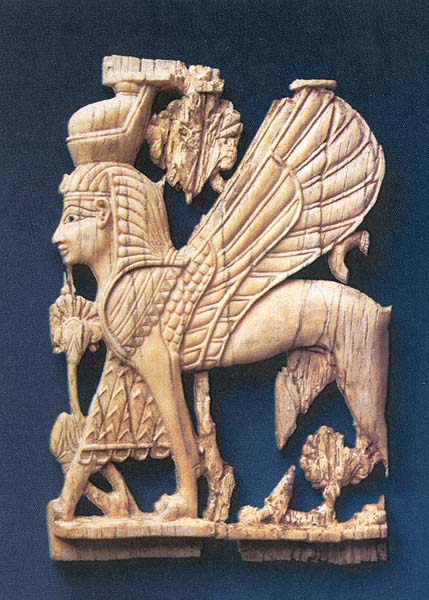Image Details

David Harris/Bible Lands Museum
Posed in a garden of palms, with a lotus thicket beneath, this serene ivory figure likely represents a Biblical cherub. From the ninth or eighth centuries B.C.E., the 5-by-4-inch plaque, cut from an elephant’s tusk, was probably once inlaid in furniture in the palace of the Assyrian governor of Hadatu, at Arslan Tash in northern Syria.
The prophet Ezekiel, in one of his visions, sees a four-sided creature in a storm with “brightness around it and fire flashing” (Ezekiel 1:4); the creature has the faces of a human, lion, bull and eagle (Ezekiel 1:10). Similarly, our ivory has a human face, a lion’s frontquarters, a bull’s hindquarters and an eagle’s wings. For author Elie Borowski, this multi-faceted creature embodied an abstract idea: Combining wisdom, strength, procreative power and soaring movement, cherubim symbolized God’s omnipotence and omniscience. Thus they were found in the holiest places (the Temple’s inner sanctum) and were associated with God’s presence.
